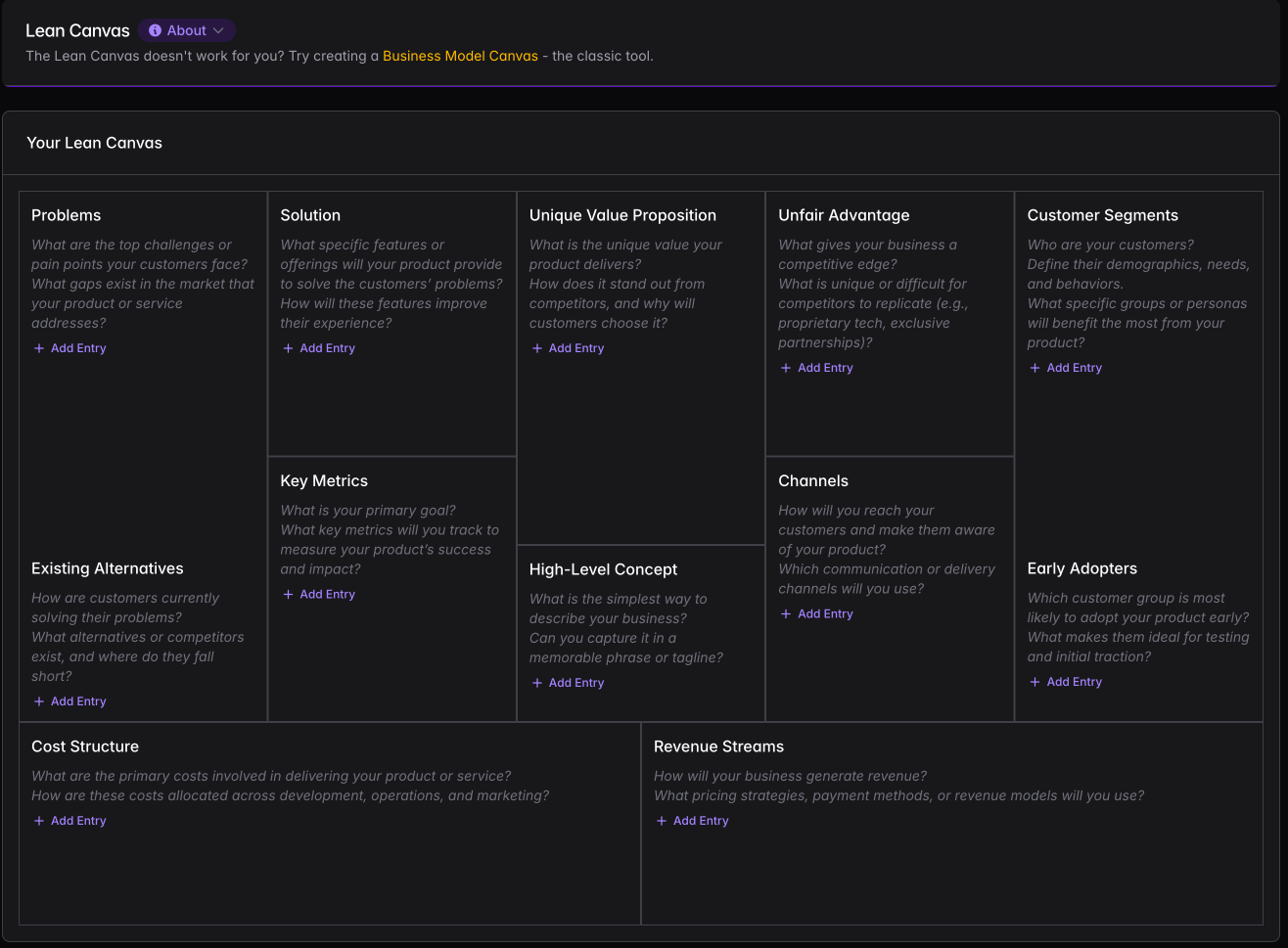Let me tell you about the stupidest business plan I ever wrote. And we've all been there...
It was 23 pages. Perfectly formatted. Complete with market sizing charts that would make McKinsey proud and five-year financial projections that had as much connection to reality as my twins' bedtime stories.
I spent three weeks on this masterpiece.
What an absolute waste of time.
The Planning Theater Problem
Most founders treat business planning in one of two ways: like academic homework or like homework you don't do.
The first group (my old tribe) creates beautiful documents that nobody reads. The second group wings it completely and crashes into predictable walls at 100mph.
Here's what happens when you spend weeks writing traditional business plans:
- 3/4 of your assumptions change within six months anyway
- You convince yourself your educated guesses are facts
- You delay actually talking to customers (because you're "still planning" or "still building")
- Your team gets emotionally attached to ideas instead of outcomes
I did all of this. Enthusiastically.
But going to the other extreme—no planning at all—is equally stupid. I've watched founders burn through runway because they never bothered to think through basic unit economics. Or chase every shiny opportunity because they never defined what they were actually trying to build.
Both approaches suck.
It's like planning a vacation. You can research every restaurant, book every tour, schedule every hour down to the minute... then it rains for three straight days and your perfect plan is worthless. Or you can show up with no plan at all and spend your whole trip wandering around lost, missing the good stuff.
You need a balanced approach.
What Actually Works (for ME): LMC
A tool I picked up and have used as my north star for planning is the Lean Model Canvas—a more flexible, pre-revenue adaptation of the business model canvas. When used properly and reviewed daily, weekly, monthly, it is an incredible instrument. You have nowhere to hide.
It's one page. Forces you to be honest about what you don't know. And unlike traditional business plans, it's designed to change as you learn.
I used to keep it on paper, then in my Kindle, scribbled on napkins, wherever I could access it. Then I thought: what better way to keep it, share it, and allow it to evolve with my business than inside FoundersBoxx? It's there at your fingertips as you manage the business, so it becomes an important guiding light instead of a document gathering digital dust.
The beauty of the Lean Canvas is that it acknowledges uncertainty instead of pretending it doesn't exist. Traditional business plans ask you to predict the future. The Lean Canvas asks you to identify your riskiest assumptions so you can test them quickly.

Why This Actually Matters
Traditional business planning tools either oversimplify to the point of uselessness or overcomplicate to the point of paralysis. The Lean Business Model Canvas bridges that gap—detailed enough to surface real insights, simple enough to actually use when you have limited time and two toddlers destroying your office.
Plus, when it's integrated with the other operational tools in FoundersBoxx, your business model assumptions can directly inform your financial projections, customer tracking, and growth experiments. It stops being theoretical and starts being operational.
Because here's the thing: a business model isn't a static document you create once and file away. It's a living hypothesis that should evolve as you learn. And if you're not learning and evolving, you're dying.
The founders who succeed aren't the ones who predict the future perfectly. They're the ones who adapt fastest when their predictions are wrong.
The Real Test
Your business model should tell you what to do next week. If it doesn't, it's decoration.
Mine sits in FoundersBoxx where I see it every time I'm working on financial projections or tracking customer metrics. It forces me to ask: "Does what I'm doing now align with what I said I was building? And if not, what needs to change—my actions or my assumptions?"
The Chinese have a saying: 摸着石头过河 (Cross the river by feeling the stones). You don't need to see the whole path. You just need to test the next step.
But you still need to know which direction you're trying to go.





